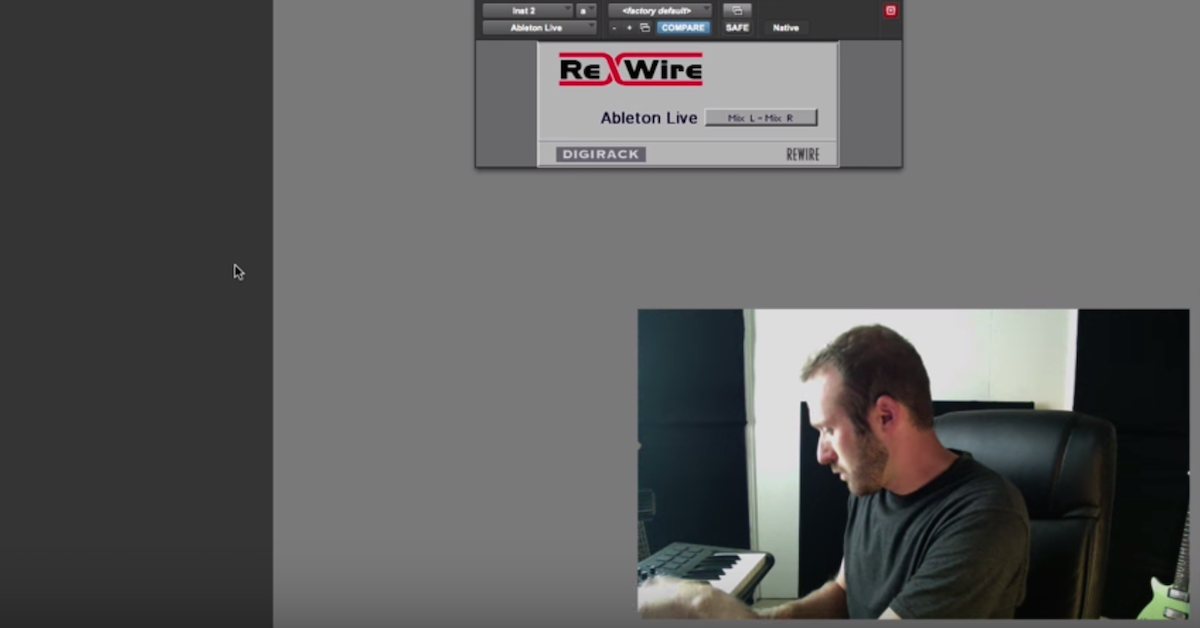Ableton Live and Cycling ’74: The Holy Alliance or Dynamic Duo?
Article Content
Just received word that Ableton has purchased Cycling ’74, the company behind Max/MSP and the visual component Jitter. Whenever I hear of mergers and companies buying other companies my usual response is one of dismay or impending doom. It seems often that these types of business decisions are not designed to benefit the consumer, but to consolidate influence and power, reduce consumer choice, and all but eliminate price competition. One only needs to look as far as the Internet provider market to realize that there are sanctioned monopolies in our supposedly free market economy allowed to fix prices and undermine any real competition.
So, as a user of Max/MSP since 1992 (at which time it was known simply as Max and owned by Opcode) I find myself both concerned and excited by this news. I’m assuming most people are familiar or at least aware of the rise of Ableton Live especially in the last few years. Originally launched in 2001 (co-founded by Gerhard Behles and Robert Henke), this unique DAW offers a significantly different view and interface from most other applications on the market. Their Clip view allows for the non-linear launching of sound files which can be easily accessed via Ableton’s own Push MIDI controller. It’s an elegant solution for live performance that has surpassed any other approach I’ve seen…with the exception of Max/MSP.
Max/MSP (originally simply Max with no audio capability, just MIDI) was developed by Miller Puckette at IRCAM in the mid 80’s and sold to Opcode in 1989. Puckette released Pd (Pure Data) in 1996, an open source version of Max still available and widely used. In 1997, Opcode sold the brand to Cycling ’74, a company founded by David Zicarelli, who was integral to the development of Max early on. The idea behind Max was a landmark solution that bridged the gap between arcane computer code and accessibility to programming in a musical context using a graphic oriented object-based model. Since then it has expanded to include a huge library of objects for manipulating and generating audio (MSP) and video (Jitter), controlling external devices, and interpreting sensor data. It has become the goto software for computer interactive performance and sound installation work. There is a plethora of 3rd party support and participation in development that is entrenched in many universities, user groups, and a vibrant and loyal community.
In 2009, Ableton Live 8 incorporated Max for Live. In addition to including several stock plugins (or devices) written in Max/MSP, users could now become developers, using Max to create their own devices that work seamlessly in the Ableton environment. This opened up a whole new world for both Ableton and Max users.
Having used Max for years for live performance, installations, and fixed media composition, I was initially reluctant to consider adding Ableton into the mix. But at some point I realized that I had actually been using my own version of their Clip view in various manifestations for years, so I gave it a shot and was pleasantly surprised with the elegance and thoughtful approach to the GUI. Since then, I have written several Max for Live devices for use in live performance, and regularly use patches running in Max simultaneously with Ableton Live without incident (knock on wood).
Cycling 74 began to incorporate Ableton style objects that would not only match Ableton’s graphics, but allow for parameter initialization and automation, and seamless integration. The two companies seem to be speaking the same language.
So what’s the problem with the purchase of Cycling 74 by Ableton Live? Hopefully nothing. Hopefully it’s all good and the partnership will strengthen both entities and ultimately yield superior products. But I can’t help but have a few concerns, so here they are:
- Does this alliance point to the possibility that Max may not be offered as an individual product someday? The idea of needing Ableton to run Max would a huge blow to hardcore Max users. Relatedly, will the creation of the Max standalone be a continued option?
- Will this development eliminate the possibility of being able to use Max to write plugins for other DAWs in the future? Although Pluggo (an extension to write VSTs) was sidelined several years ago, I had hoped another means would eventually arise. But it seems unlikely that Ableton would want to be involved in software that could be used in the context of their DAW competitors.
- Will prices for both Ableton and Max rise? Or will the release of paid updates accelerate? I believe the first version of Max I owned was 3.0. That was over twenty years ago and now we’re on Max 7. I’ve appreciated the fact that Cycling ’74 was not a company to produce annual or biannual updates simply to increase revenue, but only with major advances or paradigm shifts.
- What will happen to MIRA (an extension that offers iOS support)? Will development continue? What about other iOS and web-based functionality?
The Max culture is steeped in the DIY mindset. It’s what drives 3rd party development and what makes it such a unique creative paradigm. I can only hope these issues have been part of the discussion as these two companies become one.
Check out my other articles, reviews and interviews
Follow me on Twitter / Instagram / YouTube





